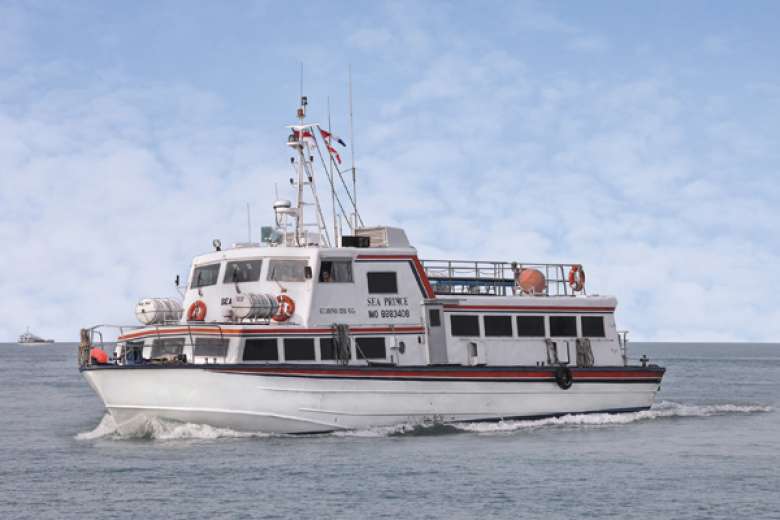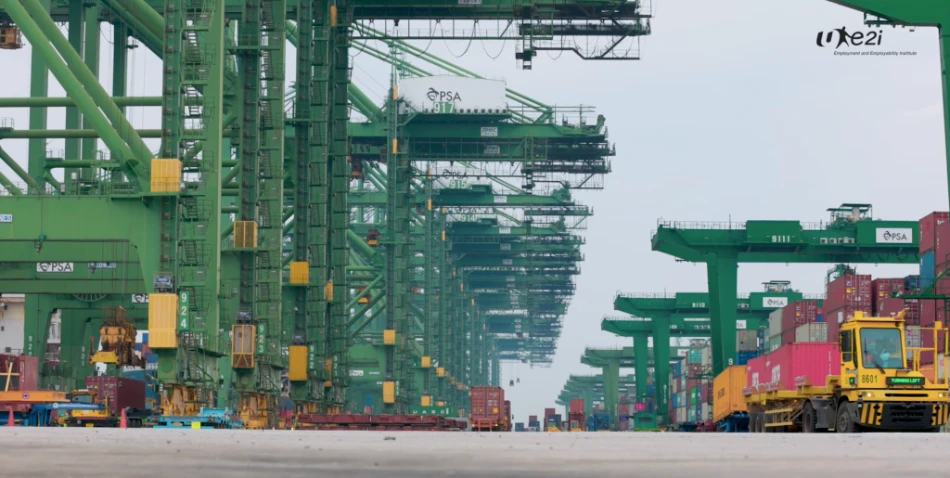Vocational Training Pays Off As Passenger Saves Others On Board

Cadet on family holiday gives an account of his up-close experience on “Sea Prince” ferry accident in November 2015…
On 29th November 2015: Indonesian registered Batamfast passenger ferry MV Sea Prince started to sink after hitting a floating object while en route to Singapore from Batam, throwing all passengers on board into panic. This was a family holiday one passenger – Aleem Kamarudin, then a cadet of the CoC Class 5 (Special Limit) Marine Engineer programme, claimed he would never forget. Aleem shares his personal experience and how he applied his training knowledge to save fellow passengers on board “Sea Prince”.

[Photo: Batamfast Sea Prince Ferry which was carrying 97 passengers on 29th November 2015 – Source: Straits Times]
“Just fifteen minutes after we sailed out, the ferry hit a reef in the water and we suddenly found ourselves stuck out at sea. The waters were shallow where we were, so when the captain tried to maneuver the vessel from its position, it wrecked the vessel even more. I think they were supposed to wait for the tide to go up before moving the boat again.
I was seated at the back of the boat next to the engine room’s door. I peered inside and saw that water was filling up inside. The crew was in shock, and after 10-15 minutes when there were still no instructions given, I knew I had to step in and do something.
Thankfully just a month before the incident, I had just completed the “Passenger Ship Safety Course” during my cadetship under the CoC Class 5 (Special Limit) Marine Engineer training, which taught me aspects of crew management and crowd control, it was so fresh in my mind that I could apply it instantly. Immediately I asked those around me to put on their life vests.

[Photo: Passengers putting on life vests on board “Sea Prince” – Source: Straits Times]
I approached the crew to ask if there was anything I could do to help them but they kept advising me to take a seat. After another ten minutes of no instructions given and no actions made, I responded where I could.

[Photo: Submersible pump, meant to reduce flooding on vessels]
I saw that the crew had turned on the submersible pump, but it only worked for a mere five minutes before it stopped. The purpose of the pump is to drain out the flooded engine space and throw the sea water overboard to reduce flooding, so that the ferry will at least have a longer chance of not sinking. Being trained as a ship percussion mechanical engineer, I understood how pumps worked and went down to fix it.
It was a hectic day. Everything that could go wrong went wrong. Even when things started to go fine, it would start to go wrong again. I kept returning to fix the pump as it would fail after every five minutes. Each time after I fixed it I ran back the other side of the ferry to help with the life rafts and tried to help the passengers to evacuate as quickly as possible. The life rafts also had many issues. We had boarded the priority passengers into the first raft – women, children and elderly, but the crew did not hold on to it properly and had let it drift away. It was pitch dark in the night and we could not see clearly where it was drifting.

[Photo: Passengers scrambling to stay afloat on rescue rafts – source: Straits Times]
On the other side, they were filling another life raft with passengers while I went back to check on the pump. Again, it was failing and I had to fix it once more. Shortly after doing so, there was chaotic shouting from the side with people screaming “Help me, help me!” – the next life raft had burst. The raft was overloaded and it had collapsed. Everyone were like sardines trying to climb onto the only floating portion in the middle of the raft.
There were two larger rescue vessels that came and shone their lights at us but did not come closer as the waters were too shallow. Thankfully there were some other non-motorised fishing boats nearby that spotted us and came to our rescue. Close to 30-40 people could fit into the first one that came by. I told one of the other fishermen’s boat to search for the raft that floated away carrying babies, women and the elderly – which we had later found to have a huge hole in it.

[Photo: Fishermen boats come to the rescue – source: Channel News Asia]
Thankfully, that raft was eventually found and all the other passengers managed to be rescued by the fishing boats. After having been through something like this, drills have become of great importance to me – it is not a waste of time, but a matter of life and death. If one lacks drills and training, one will not know what to do when a crisis strikes.
My training taught me the importance of efficiency and how to handle passengers by first calming them down through giving instructions. It taught me the fastest possible way to survive in situations like these. I did not expect myself to have to apply so quickly what I learnt into a real-life scenario. We were stuck out at sea for three hours through the whole ordeal, but I am grateful that everybody survived that day.”
On 27th April 2017, Aleem Kamarudin was one of the proud graduates of the CoC Class 5 (Special Limit) programme, a joint training programme initiated by MPA, e2i and WSG. It was this very programme that had prepared him for the ferry crisis. He is now currently employed at Wee Tiong Marine Pte Ltd and started working as 3rd Engineer on a bunker barge since 1st June 2017.

[Photo:Left to right: Director (Shipping) – Capt Daknash, Aleem Kamarudin, MPA CE – Andrew Tan, and Deputy Chief Executive, e2i (Employment and Employability Institute) – Mr. Gary Goh. Source : MPA]

[Photo: Aleem Kamarudin (left) with his older brother Helmi Kamarudin (right) who is also a Tripartite Nautical Training Award (TNTA) graduate as Deck Officer]
First introduced in 2011, the CoC Class 5 (Special Limit) programmes initiated by Maritime and Port Authority of Singapore (MPA), the National Trades Union Congress’s (NTUC) e2i (Employment and Employability Institute) and Workforce Singapore (WSG) aimed to deepen the skills of seafarers and provide a structured career pathway so that they could progress in the maritime industry to become Chief Mates and 2nd Engineers and eventually upgrade to the level of Masters and Chief Engineers. The programme prepare seafarers to serve onboard ships operating within “Special Limits” near Singapore. It also provides opportunities for Singaporeans to equip themselves with the required skillsets and embark onto a rewarding career in seafaring [Source: MPA]
For more information on Maritime CoC Class 5 (Special Limit) programme, click here.
Incident on other news channels:
- Life rafts tore when we got on them, say passengers in Batam ferry accident
- Safety of ferry passengers under scrutiny
- About 100 passengers rescued after Batam-Singapore ferry hits floating object
- Batam ferry accident: Ferry hits floating object during journey to Batam
- Batam-Singapore ferry accident: Ferry ran aground after taking shortcut, MPA says
- MPA investigating ‘Sea Prince’ Batam ferry incident
[Following the incident, MPA took immediate actions to enhance the safety standards of regional ferries by stepping up all Inspections on regional ferries. You may refer to the full report here.]
Story by: R.Lee



